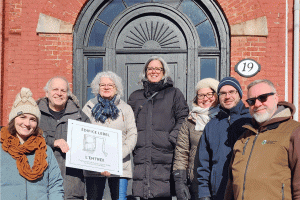An open letter to the government of Canada
Public policies for the right to housing generally range from support for the construction of social housing to customized assistance aimed at helping households in difficulty find housing in the private, for-profit market. As part of an ambitious national strategy such as the one the federal government is developing to ensure the right of all Canadians to “safe, adequate and affordable housing,” investing in the production of new non-profit housing is a more structured and sustainable approach. With Finance Minister Bill Morneau’s second budget on the horizon, it is hoped the measures it contains are aimed in this direction.
At first glance, programs that focus on aid to individuals may seem more effective and less costly because they do not require the construction of new housing or associated capital expenditures. But this quality is also their main shortcoming: these programs do nothing to correct the shortcomings of the private market housing supply and the expenses they incur must be renewed perpetually, making them bottomless pits for public funds. While they can play a supportive role in certain markets with special characteristics or in emergencies, they cannot provide a comprehensive strategy for addressing the right to housing.
The high cost of rents in the private market and their tendency to increase faster than the income of the poorest households largely explains the housing difficulties faced by too many of our fellow citizens. Private rent-subsidy programs encourage this upward trend. Several studies carried out in jurisdictions where this approach has been favoured have revealed its inflationary effect on the overall cost of rent.
When vacancy rates are rising, there are some homeowners who are willing to rent their homes to households in difficulty provided the government supports or even guarantees rent payment. But when the market tightens and demand exceeds supply, they may no longer see any interest in it, especially when it comes to clients with social integration difficulties who may require support far exceeding what property owners are able to offer. Experience shows that even when these tenants are exemplary, if customers who can pay more come forward, landlords don’t hesitate to break their agreements to accommodate the new applicants.
Unlike rent supplements in the private market, which must be renewed in perpetuity and whose costs increase over time, non-profit housing promotes long-term affordability and stable rents for newly built housing. The organizations that own them are not looking for capital gains; their buildings are not intended to be sold for profit or to feed the speculative market. From the outset, their rents are below market, and afterward they rise more slowly than the market and remain affordable.
Data from organizations supported by the Canada Mortgage and Housing Corporation show a gap of close to 33% between their median rent and the market’s. The rent subsidy offered to some of their tenants is therefore much less costly than private market subsidies: In Quebec, this translates into an average monthly cost of $230 in federal housing stock compared with $316 in the private market.
That said, housing problems are not just financial. There’s overcrowding for large families, problems of sanitation and deterioration of the housing stock, energy inefficiency… Programs that support community housing—whether new construction or the purchase and renovation of existing buildings—tackle these problems. They thus contribute to the revitalization of the housing stock and the dynamism of communities and ensure that the overall housing supply corresponds to the needs of individuals and families.
Another feature that distinguishes community housing from for-profit is that the former facilitates the organization and delivery of support services for troubled tenants, many of whom have interrelated problems (addictions, mental health, extreme poverty, more or less chronic homelessness, loss of autonomy among the elderly, etc.). Because of its collective character, non-profit housing becomes a hub that allows the pooling of available public and community resources.
Programs based on helping the individual are more a matter of income redistribution policies and social transfers than a real housing policy; in this they necessarily interfere with other measures and programs in place. Implementation of a rental subsidies program across the country would require much more complex structures and coordination than a new housing development program.
It is therefore hoped that the government of Canada’s budgetary guidelines in this area will favour development of community housing stock.
Jacques Beaudoin
Research and Education coordinator
Réseau québécois des OSBL d’habitation / Quebec Network of housing NPOs
102-1431, rue Fullum
Montréal (Qc) H2K 0B5
514 846-0163 poste 225
j.beaudoin@rqoh.com


























